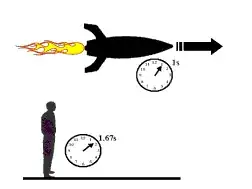Explanation for the questions in the title:
According to the the (special theory of) Relativity, if an observer is stationary and sees a fast moving object then time runs faster for the observer compared to the mover.
For example, persons 'A' & 'B' are somewhere far away in universe standing on a platform. There is nothing nearby for several light years. Hypothetically assume that 'A' is standing on the platform and 'B' boards the rocket and flies away with a significant % of light speed. Due to which the time runs 1.67 faster for 'A' compared to 'B'.
When 'B' returns to see 'A' after 10 years, 'A' has already passed 16.7 years. This is the premises of Relativity.
Now, my confusion starts here. Why only 'A' is considered "stationary" and 'B' as "moving"? Simulate the situation in other way for the same event. With respect to 'B', rocket is stationary and 'A' moves away with platform. And finally 'A' "returns" to see 'B'. In such case, 'B' should have grown older by 1.67 times.
But neither that happens nor both 'A' & 'B' age equally. It's just that 'B' remains younger.
On the funny note, the premises of relativity here should be who travels relative to other and not who burns the fuel! :-)
I have referred few questions in this forum, but couldn't get the answer.
